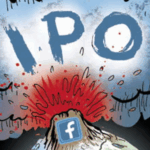 A month after accepting a $50 million investment from PE firm Spectrum Equity in return for a minority stake in the company, video ad platform Extreme Reach is carefully planning a series of small acquisitions directly tied to building scale, not greater technology advancement.
A month after accepting a $50 million investment from PE firm Spectrum Equity in return for a minority stake in the company, video ad platform Extreme Reach is carefully planning a series of small acquisitions directly tied to building scale, not greater technology advancement.
In an interview with AdExchanger, CEO John Roland didn’t address the failed attempt last year to buy digital ad management company DG in a deal valued at $550 million, but going forward he indicated interest in deals that merely add products to the company’s suite. Since video is only one part of DG’s functions – the combination would have produced annual revenues from TV distribution of just $300 million, an analyst told AdExchanger at the time – the broader scale of the video market Roland desires isn’t there, so there’s little reason to revisit that deal or another one like it.
“We have our tech capabilities largely built out,” Roland said of the nearly five-year-old Needham, MA-based company. “So we don’t have to acquire for products. We’re making acquisitions for greater scale and are looking for things that give us larger TV distribution, online video ad serving and technologies that address the coming royalty headache of talent management.”
At the moment, talent costs related to TV commercials are not a concern, because advertisers can simply check a box on their production invoice that allows them to run a TV spot online for 13 months without incurring additional royalty fees. Although there is no change to that cost structure yet, the Screen Actors Guild, which represents film and TV performers, is lobbying for the ability to charge advertisers and agencies based on usage.
The expectation for a change in the fee structure for commercial actors is one to three years away, Roland said.
“It costs roughly $300,000 for a TV commercial’s initial shoot and production,” Roland said. “Then there’s royalties, which accumulate based on how much you’re running the ad. That expense can be significant. We understand that because we come from the TV world and we’re bringing those ads online. As the idea of TV ads and online video ads merge, and there’s just video, talent fees are going to represent a major cost of doing business.”
As marketers shift more spending to online video – Roland doesn’t expect TV budgets to move online, he simply sees more declines in print and other traditional media spending – the Extreme Reach co-founder anticipates that marketers will look for ways to rein in expenses.
At conferences, media agency executives and video ad firm operators often note the “lean back”/”lean forward” postures of consumers viewing TV and video. Ads need to be “native” to their environments, the thinking goes. Merely cutting a 30-second pre-roll into a 15-second one suitable for YouTube, Hulu or some other site isn’t going to work.
Roland is skeptical. “You get clear brand uplift if the consumer sees the same exact ad on their TV, smartphone or tablet. If it didn’t work, advertisers would have stopped doing it a long time ago,” he said.
For Extreme Reach, the original-versus-repurposed debate takes a backseat to whether a cross-platform campaign performed well or not. The company’s Cross Media Reporting Suite, which was launched in March and covers data showing impressions, reach, frequency and campaign performance, is going to be a key part of its business.
Extreme Reach was profitable before its $50 million investment, Roland is quick to emphasize.
Its 2012 profit was $13 million; Roland expects that number to rise this year by nearly 40% to $18 million, as revenues jump 50% to $61 million through the end of 2013. Meanwhile, the company is rapidly growing headcount. In 2011, it had 100 employees. By the end of 2012, it had grown to over 200 people and now has a total of 235 staffers in place. Extreme Reach has nine offices across the US.
As for acquisitions, Roland said that Extreme Reach is “always in talks” with potential targets, but nothing is imminent and he feels no rush to buy. “Although there are no concrete plans at the moment, we’ll probably buy one or two companies by the end of the year,” he said.













